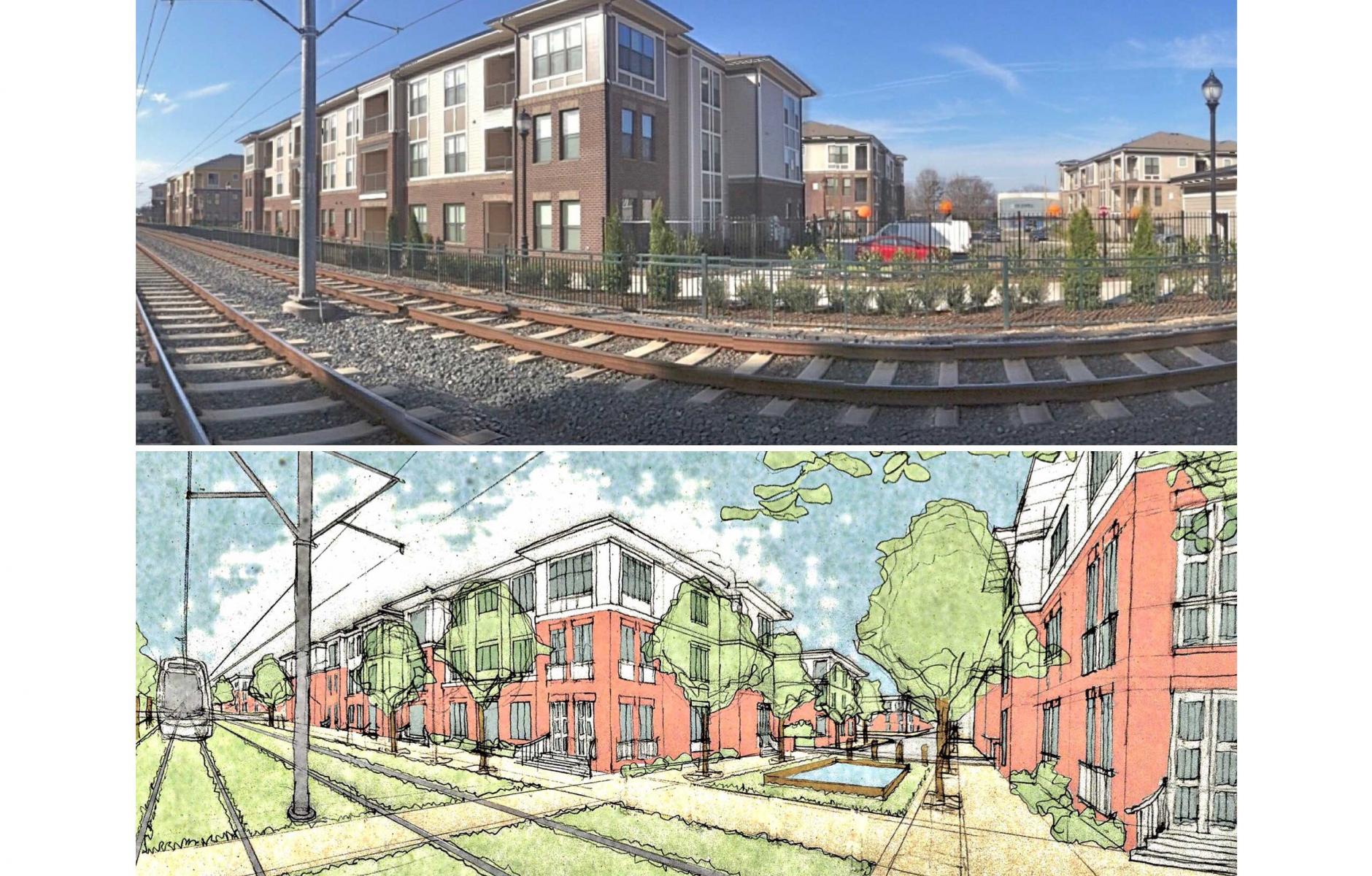
Creating civic space from the invisible
Entire light rail corridors could be reimagined as much better civic space with green tracks rather than the current heavy-freight style engineered rip-rap rocks and fences. More cities should embrace this model. Here is a sketch of this design approach applied to Southend Charlotte, North Carolina, where the light rail corridor lacks connectivity.
Today many light rail lines embedded in emerging urban transit-oriented developments apply suburban speeds to their rolling stock and tracks are built and detailed like a heavy freight rail track with long separations between crossings. But consider growing trends:
- TOD hot spots continue to densify with urban car-optional living. Walkability and connectivity are key in these places, and crossings are currently too far apart for the maturing urbanism.
- New rolling stock can be fitted to run on both light rail and streetcar lines and tracks can overlap and be interconnected—so they can share cars and are interchangeable when needed.
- With this flexibility, sections of light rail line can be converted to more of a streetcar section—with slower speeds and more frequent service.
We need more discussion on the pros and cons of different light rail designs. Green tracks raise practical concerns, but also generate significant enthusiasm. Many examples have been built, and we can expect more implementation in the near future.
This kind of culture shift requires a catalyst to push it into reality. For example, a couple of decades ago everyone laughed at the idea of roundabouts replacing conventional traffic signal controls. The change required importing a roundabout expert from Australia to travel the country making dozens of presentations to convince the industry to change. We are likely to need similar change agents for green tracks, as the US-trained engineering industry is unlikely to make the transition on their own. So, who out there likes the idea of finding a “Conductor Greentracks”?
It makes sense to match the right transportation to the right urbanism. And, as the urbanism evolves, cities benefit from the flexibility to enable the transit to evolve.




